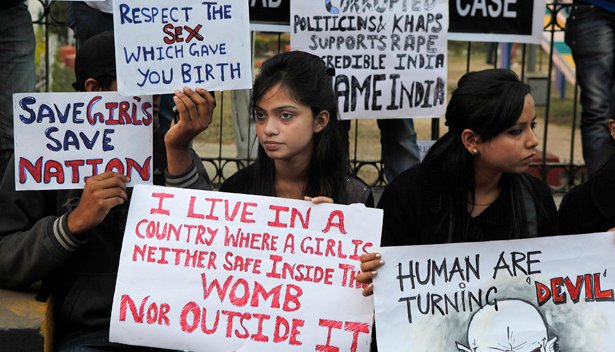
By Sophie Corrodi
In the first of our series on science and gender, Sophie Corrodi examines why leprosy still has a foothold in India
Polygeia is a student think-tank, linked to Cambridge, Oxford, and Imperial College, with a focus on on studying global health and public policy issues. Its projects span a wide range, from tropical and infectious disease, to women’s health, mental health, and even technology in emerging healthcare and biotech projects.
Polygeia has become increasingly prominent in the global health community, notable for its ability to empower students to effect a tangible change in society. Charities such as Doctors Without Borders have even commissioned the group to write studies and advisory papers for their own work. This year, I’ve worked alongside two other students for Lepra, the UK’s oldest charity for leprosy eradication in India, Bangladesh, and Mozambique.
Perhaps the most valuable experience I’ve gained from the work has been learning more about the disease of leprosy and its transmission dynamics in India. Our paper focused on vulnerable female populations in rural areas. The findings provided a unique insight into how factors such as gender influenced transmission, particularly specific to Indian culture in far-flung communities.
While leprosy is clearly a global issue that is particularly prevalent in developing Eastern countries, India shoulders over 60% of that global burden. This suggests that underlying factors beyond pure biology may predispose the country to such a high proportion of cases. Other statistics complicate this picture further. Particularly in rural India, discrepancies exist around when cases of the disease are diagnosed. For example, there is a significant deficit in females aged 11-19 seeking medical treatment for leprosy, which indicates a gender bias that affects transmission factors.
Indian culture in particular exacerbates this bias, as a result of gendered beliefs that are that are still dominant in its population. In rural India, it is often claimed that Swayamvara practices, whereby women choose their own husbands, are ‘promiscuous’, and it is believed by many that women should be stripped of independence. In these communities, 74% of marriages are arranged. This perpetuates the patriarchal and caste-based system which places men at the centre of wedding practices.
With the removal of women’s ability to choose their spouses, they are entirely dependent on men’s choices, and often leprosy makes a potential female spouse far less desirable. Data shows that fewer women of marriage age are reporting cases and seeking treatment so as to avoid seeming ‘contaminated’ by the disease, which in turn often increases the severity of the cases and ultimately prevents healthcare access altogether. Identifying leprosy in girls of wedding age targets the women as victims of a ‘dirty’, ‘contagious’ disease and unworthy of a suitable husband, explaining the decline in registered cases of leprosy in this age group. This delay is a dangerous, as it leads to these women suffering untreated from the disease for potentially up to eight years.
In addition, though arranged marriages are a distinctly social aspect of the culture in India, their implications perpetuate much further into the health of the women. The role of women as less autonomous individuals means that women often delay going to hospital until their husband or guardian feels it was necessary. Given that the time it takes to diagnose leprosy is a significant factor in determining the severity of the disease, the nature of the role of women in relation to their husbands or guardians directly leads to a increased impact from leprosy and constitutes a major risk factor for women’s health.
The cultural stigmatisation of leprosy, and of women with the disease in particular, is reinforced by laws imposed by the Indian state. The police, working under the Indian state, currently have huge powers of arrest and confinement, which includes arresting women for the noncriminal offence of ‘immorality’. Asylums to which infected family members are often committed are notoriously run like prisons, further propagating the idea that suffering from leprosy is a crime, and thereby deserving of a lowered standard of living.
These modern laws are eerily similar to earlier draconian acts, such as the Leper Act of 1889, introduced by the British Raj, which required forced confinement of people with leprosy, whereby anyone with the condition was placed in an asylum or colony. Though post-British colonial influences are fading, institutionalisation and exclusion linked leprosy with poverty and criminality, laying a poor foundation for later change in mentality.
Many of these cultural and legal prejudices stem from much earlier generations, and it can be notoriously difficult to change longstanding traditions and views of populations with largely limited access to education that acknowledges both the need for equality and the current prevailing stigma of the infection. However, while changing pre-existing mentalities and cultural perceptions is difficult, it is essential when tackling neglected diseases such as leprosy. Therefore, health education and gaining a stronger understanding of how leprosy is transmitted is crucial to reducing stigma from others.
Increased internet and technology access has been shown to change perceptions towards arranged marriage and other gendered cultural practices in India, particularly with the advent of online dating. This represents a possible tool for modernisation that can potentially have a huge impact on future generations’ relationship interactions, and therefore on the transmission of leprosy.
Last week, myself and a number of other students were invited to a reception for Lepra at the House of Lords, where we had the chance to present these findings, alongside our other work, to Lepra’s board, colleagues and Lords. The evening was yet another prime example of Polygeia’s ability to place students at the forefront of innovative research, in positions that would previously have been unobtainable.
Source: Varsity Online

Leave a Reply